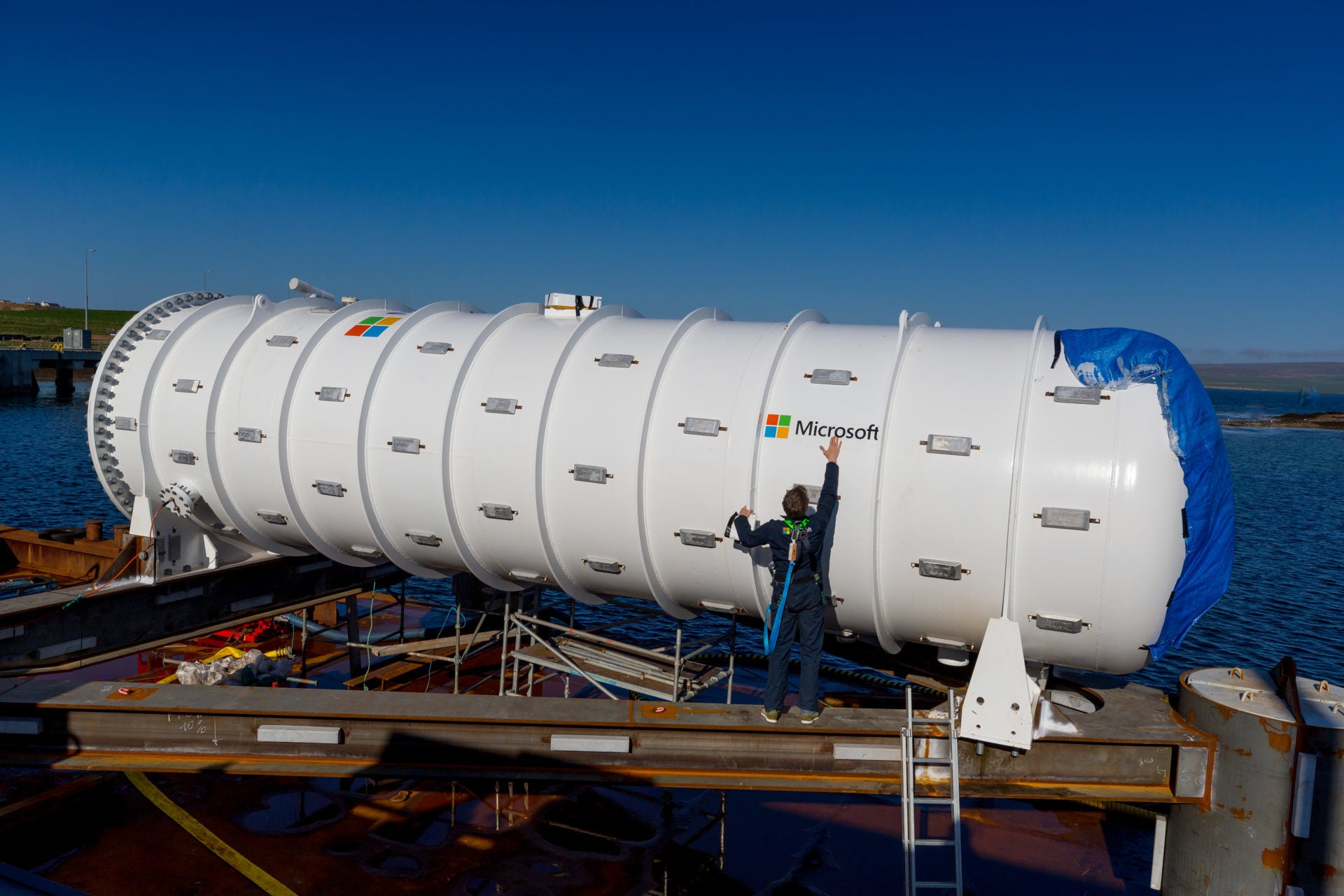
The wave of record-breaking hot weather in Europe that left data center cooling systems struggling to cope with the extreme heat has begged the question of whether Europe’s tech infrastructure can cope with a hotter world. As one UK headline put it, “Google Datacentres Fry Amid European Heatwave.”
The human solution to cooling off might well be to head to the coast for a dip. The same thinking is now already well underway for data centers, with Microsoft and China’s Beijing Highlander leading the way and submerging them, and in Highlander’s case, moving to commercial development.
But if underwater data centers are such a good idea, why isn’t Big Tech adopting them?
Microsoft embarks on Project Natick
In 2018, Microsoft not so much broke new ground as broke water, submerging its first submarine server off the Orkney Islands in Scotland. Project Natick involved running an underwater data center unattended to see whether the cloud could work underwater. For two years, nearly 120 feet under the sea, Microsoft ran 12 racks containing 864 standard Microsoft datacenter servers processing Azure workloads.
The project’s genesis began in 2013 when a Microsoft researcher, previously a US Navy submariner, wrote a paper proposing underwater facilities. Proof of concept tests followed in California before Microsoft headed to the Scottish islands for a real test.
Microsoft worked with a French specialist company in submarine and maritime engineering, Naval Group, to build the datacenter, which was named Northern Isles.
How well do you really know your competitors?
Access the most comprehensive Company Profiles on the market, powered by GlobalData. Save hours of research. Gain competitive edge.

Thank you!
Your download email will arrive shortly
Not ready to buy yet? Download a free sample
We are confident about the unique quality of our Company Profiles. However, we want you to make the most beneficial decision for your business, so we offer a free sample that you can download by submitting the below form
By GlobalDataAfter operating the prototype for two years, on July 9, 2020, the algae, barnacles, and sea anemone-coated—but very much still working—data center was finally retrieved for analysis.
The project proved that the concept of underwater data centers is feasible, as well as logistically, environmentally, and economically practical. The servers in the underwater data center turned out to be eight times more reliable than those on land.
Commercial development sets sail in China
Microsoft’s Project Natick work was subsequently followed up by the Chinese company Highlander, which did its own pressurized vessel trial, before planning a commercial-scale project off the coast of Hainan Free Trade Port. The data center will feature up to 100 pressure vessels, launched across three phases of development.
The project, which will create the world’s first commercial underwater data center, will cost around $879 million and will be included in the city of Hainan’s five-year development plan. Preparations are also underway for new underwater data center projects in coastal provinces and cities across China, including the Yangtze River Delta and the Pearl River Delta.
Data center providers’ interest seems stuck at low tide
What is puzzling is that despite Microsoft’s success with Project Natick in demonstrating that it is possible to put data centers underwater, there have not been waves of interest from other providers. Highlander in China is the only provider that appears to be actively pursuing the opportunity.
Other providers—Meta, Amazon, Google—do not appear overly enthused by the idea. Even Microsoft appears reluctant to say much about the next stage of Project Natick. With the planet continuing to heat up—and data centers needing cooling down—it is time more data centers got their feet wet, and grateful barnacles found a new home.




Related Company Profiles
Naval Group